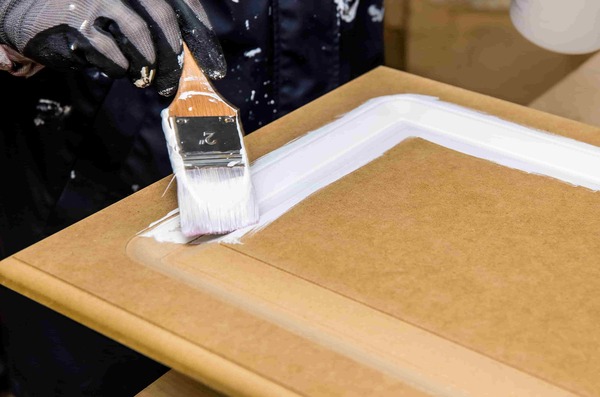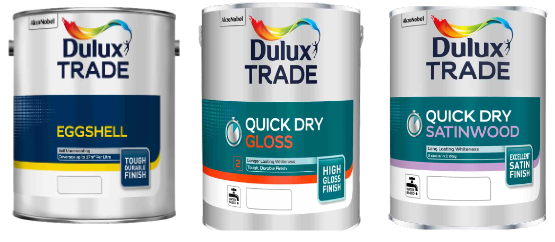
The Best Paint For MDF | Top Primers, Acrylics & Enamels | 2025
Posted by Skirting World on 2nd Jan 2025
The Best Paints For MDF - Ranking & Guide
Painting MDF requires careful consideration for a high-quality result.Choosing the wrong primers, acrylics or enamels leads to poor adhesion, quick wearing, cracking, chipping, uneven finishes, and requires repeated re-painting.
Learn how to pick the right MDF paints to achieve smooth, durable and professional-quality painted projects.
Choosing the Best Paint for MDF
Achieving a flawless, professional-grade finish when painting MDF requires using a 2 or 3 layered approach.
By using Primer, Acrylic and Enamel paint in combination you can achieve a durable finish on your MDF project that lasts a lifetime.
- Primers are essential first. They seal the porous MDF surface to prevent uneven paint absorption and swelling. Primers create a uniform base layer and improve adhesion for the next layer of paint.
- Acrylic paints provide your colour, coverage and decorative finish. Quality acrylics flex to prevent cracking as MDF expands and contracts. They adhere tightly and resist chipping over time.
- Enamels give a clear, protective top coat over acrylic paint. Enamels make MDF impervious to moisture and wear-and-tear to preserve your hard work for the decades to come.
In this guide, we’ll compare top brands and review recommended all-purpose paints for priming, colouring, and protecting MDF projects.
Quick Summary
The Best Paint For MDF
| Best Primer Paint | Best Acrylic Paint | Best Enamel Paint | |
|---|---|---|---|
| MDF Furniture | Leyland Trade MDF Primer | Dulux Trade QD Eggshell / Satin / Gloss | N/A |
| MDF Cabinetry | Caparol Haftprimer | Dulux Trade QD Eggshell / Satin / Gloss | Rustins Varnish |
| MDF Flooring | Johnstones Trade MDF Primer | Dulux Floor Paint Range | Johnstones Floor Epoxy |
| MDF Trim/Skirting | Leyland Trade MDF Primer | Dulux Diamond Satinwood | N/A |
| MDF Crafts | N/A | Your paint of choice | N/A |
| MDF Doors | Zinsser Bullseye 1-2-3 | Dulux Trade QD Eggshell / Satin / Gloss | N/A |
Find out why in our comprehensive breakdown below...
↓
Match Paint To The Project
MDF is used for a wide variety of projects due to its smooth, stable, and affordable sheet construction. When painting MDF, it's important to consider the end use and environment in selecting the right paint products. One type of paint isn't best for all types of MDF.
The paint you choose must be aligned with the item that you want to paint.
MDF Furniture
Furniture needs flexible paints that resist chipping from movement/wear.
- Primer: Leyland Trade MDF Primer: Flexible, fast-drying primer that seals MDF fibres
- Acrylic: Dulux Trade QD Eggshell / Satin / Gloss: Durable, flexible acrylic paint
- Enamel: Typically not needed
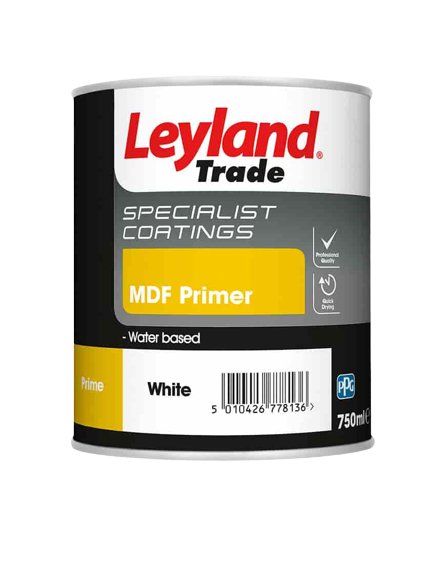 |
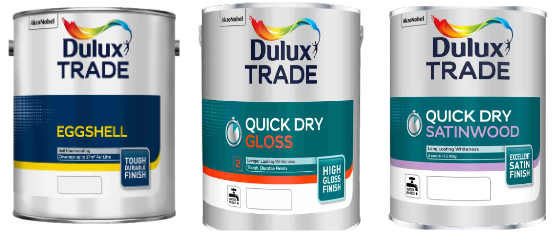 |
MDF Cabinetry
Cabinets need a hardwearing, protective paint finish.
- Primer: Caparol Haftprimer: High adhesion primer that seals the MDF surface
- Acrylic: Dulux Trade QD Eggshell / Satin / Gloss: Durable cabinetry or wood finish paint
- Enamel: Rustins Polyurethane Varnish: Protective clear polyurethane enamel
 |
 |
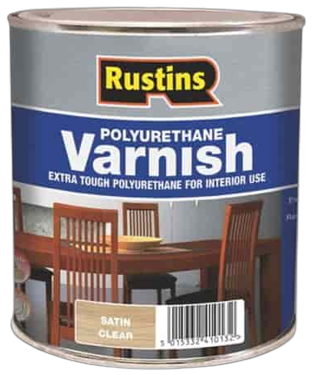 |
MDF Flooring
Flooring requires ultra durable, scuff-resistant paint.
- Primer: Johnstones Trade MDF Primer: Strongly adhering, fast-drying primer
- Acrylic:Dulux Floor Paint Range: Anti-slip or durable acrylic
- Enamel: Johnstones Floor Epoxy: Two-part epoxy floor enamel
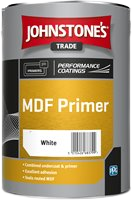 |
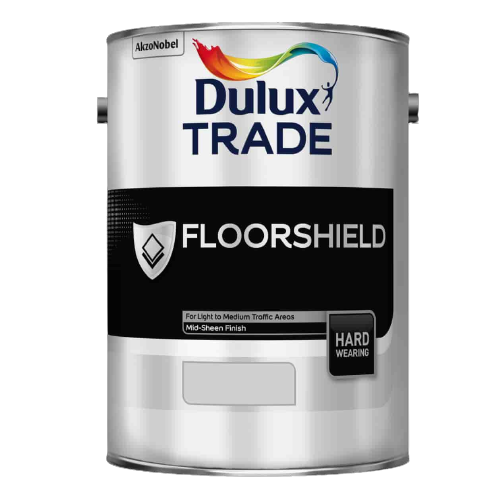 |
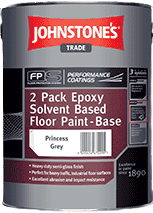 |
MDF Trims/Skirting
Trims and MDF skirting board can use standard primers and acrylics.
- Primer: Leyland Trade MDF Primer: Basic all-purpose primer
- Acrylic: Dulux Diamond Satinwood: Durable trim acrylic
- Enamel: Not required
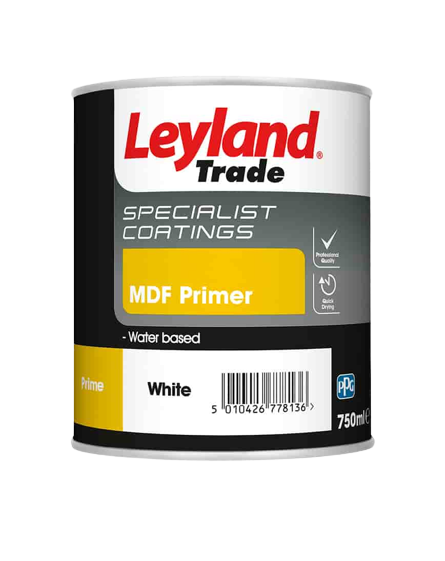 |
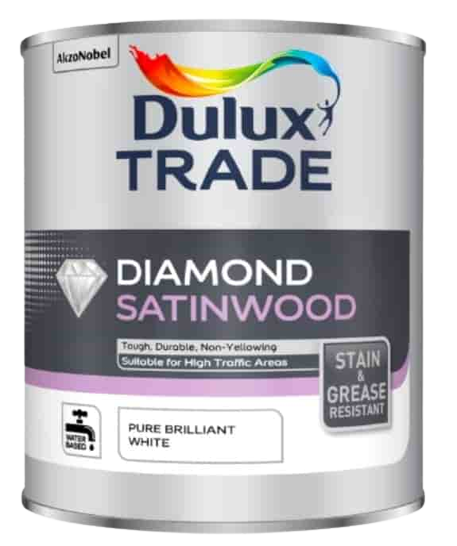 |
MDF Doors
Doors require hardwearing, flexible paint.
- Primer: Zinsser Bullseye 1-2-3: Adhering, fast-drying primer
- Acrylic: Dulux Trade QD Eggshell / Satin / Gloss: Durable, hardwearing acrylic
- Enamel: Not necessary
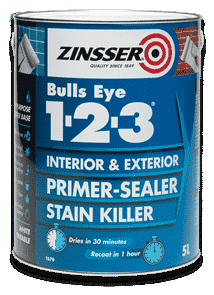 |
 |
MDF Arts & Crafts
Crafts need flexible paints with wide color options.
For arts and crafts, there are no specific paint product recommendations, opt for flexible acrylics over oil-based paints. Oil-based paints can cause MDF swelling and damage. Instead, choose water-based acrylics that remain elastic when dry and won't crack when the MDF is cut.
This allows the paint to move with the natural expansion and contraction of the MDF. Additionally, select acrylics with agents to resist moisture absorption. This prevents warping or bubbling from humidity changes.
With quality acrylics, you can match any creative color scheme without primers or finishes. Prioritize paint flexibility to avoid damaging the MDF when applying color to your arts and crafts projects.
Water vs Oil-Based Paint
It’s not only the sheen and colour of your paint that matters, but also the type of solvent the paint is composed of. There are two main types of paint solvents, water and oil.
The solvent that paints are based on will make a big impact on the appearance of the colour over time, its durability and its quality.
What is Water-based paint?
Water-based paint also known as latex or acrylic paint is a paint which uses water as the primary carrier. Water-based paint is the most common type of paint and is considered more environmentally friendly because it emits lower levels of volatile organic compounds (VOCs) during application and drying in comparison to traditional oil-based paints.
Water-based paints are a popular choice for skirting boards as they create easy-to-clean surfaces which are moisture-resistant, and dry quickly, which means you can use them in bathrooms and kitchens and won’t have to tip-toe around the house for too long after applying.
Advantages of water-based paint
- Low emissions of VOCs
- Easy to clean
- Dries quickly
- Can be tinted to match a variety of colours
- Offers good adhesion and durability on skirting boards
- Can be applied in multiple layers for better coverage and finish
Disadvantages of water-based paint
- Can be more expensive than oil-based paint
- Not as durable as oil-based paint
- May have a rough or imperfect finish
- Not the most suitable for high-traffic areas
What is Oil-Based Paint?
Oil-based paint, also known as alkyd paint, is a paint which uses oils such as mineral spirits or turpentine as the primary carrier. One of the main advantages of oil-based paints is their long lifespan and smoother finish than water-based paint.
Oil-based paints are a more traditional option, they can have higher levels of volatile organic compound (VOC) emissions during application and drying, which can have a negative effect on the environment. Cleaning oil-based paint is also difficult and requires the use of harsh chemicals. It can also take longer to dry than water-based paint.
Advantages of oil-based paint
- Longer lifespan and durability than water-based paint
- Smooth and shiny finish
- Suitable for high-traffic areas
- Resistant to stains
- Provides good resistance to moisture
Disadvantages of oil-based paint
- Difficult to clean
- High levels of VOC emissions
- Prone to discolouration and yellowing
- Takes longer to dry than water-based paint
- Not as sustainable and environmentally friendly as water-based paint.
Non-Toxic Alternatives
For those concerned about toxicity and VOCs (volatile organic compounds) in traditional paints, milk paint and chalk paint offer non-toxic options suitable for MDF.
Milk Paint
Milk paint is made from milk protein, lime and pigment. It is odourless, low VOC and contains no toxins. The natural composition makes it safe for use on children's items. Milk paint has excellent adhesion to smooth surfaces like MDF without needing a primer. It cures to a matte, porous finish that requires sealing for durability.
Chalk Paint
Chalk paint gets its name from its velvety, matte texture like chalkboard paint. It is water-based with a high pigment load for excellent coverage. Chalk paints are low odour, zero VOC and contain no toxic ingredients. They adhere well to MDF and leave a porous patina, requiring a protective topcoat for hardness and washability.
Plant-Based Paints
Some newer eco-friendly paint lines use plant oils like soybean and linseed instead of petroleum. These provide a viable non-toxic option as they contain zero VOCs. However, plant-based paints have disadvantages like longer drying times, less coverage and shorter shelf life. They require careful MDF preparation and sealing for adequate adhesion and durability.
For most non-toxic options, allowing for extra drying time and a protective topcoat is advised to maximize adhesion and achieve a durable result on MDF projects. But for situations like children's furnishings, these provide a safe painting alternative.








